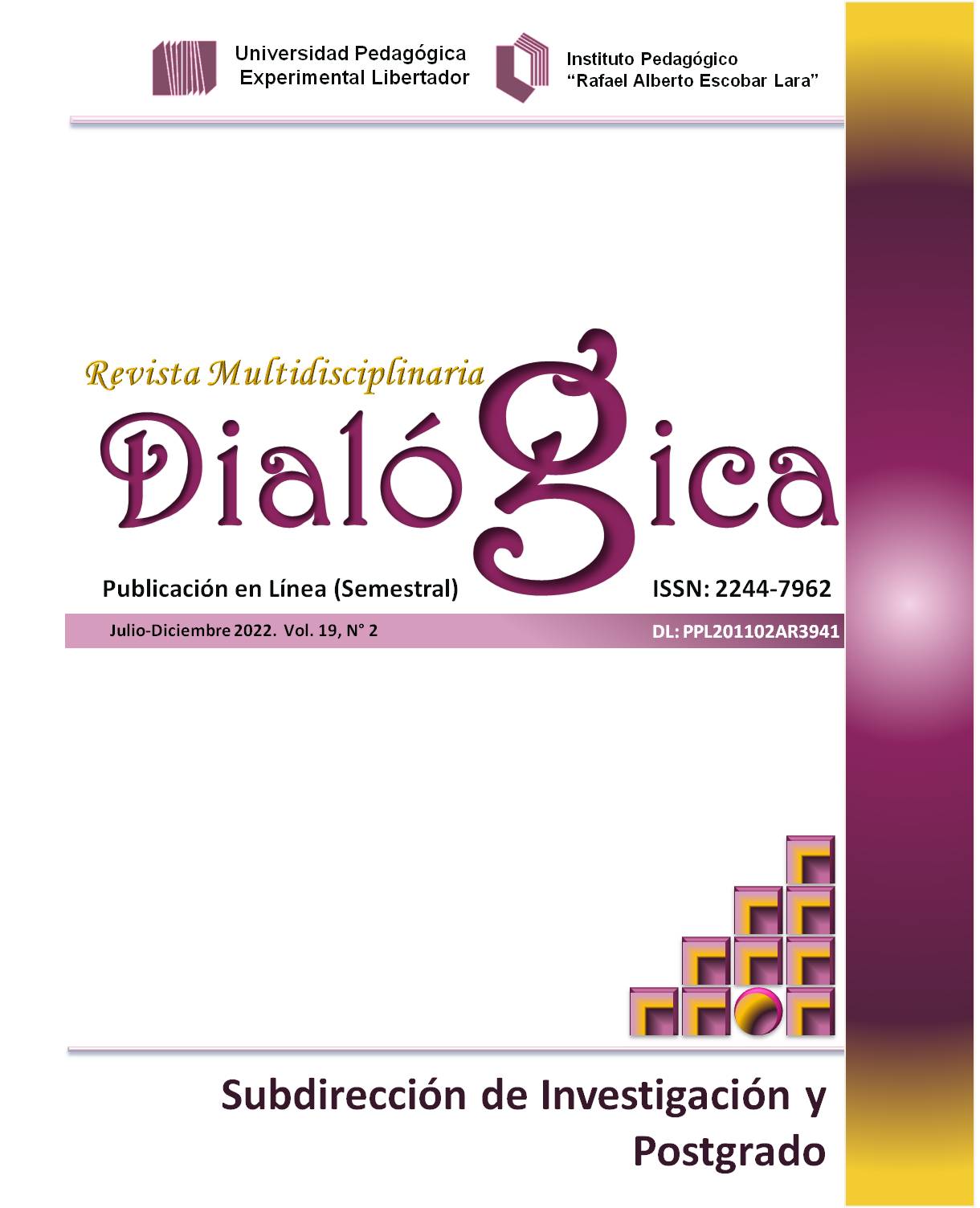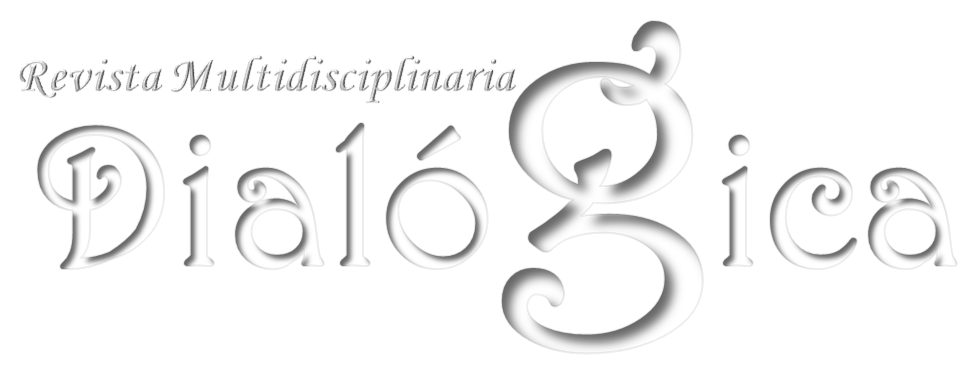ESTRATEGIAS INTERACTIVAS PARA LA ENSEÑANZA DE LAS CIENCIAS NATURALES
DOI:
https://doi.org/10.56219/dialgica.v19i2.2161Palabras clave:
enseñanza, aprendizaje, tecnologíaResumen
El presente artículo tiene como propósito principal presentar una propuesta de un Tutorial de Estrategias Interactivas para la Enseñanza de las Ciencias Naturales, dirigido a los docentes de Educación Primaria, de la E.B.E. Manguito I. La investigación estuvo enmarcada bajo la modalidad de proyecto especial, apoyada en un diseño de campo, no experimental, de tipo descriptivo. La muestra seleccionada estuvo conformada por 15 docentes de Educación primaria, a los cuales se les aplicó un cuestionario de 20 ítems, con respuestas tipo Likert. Entre las conclusiones se encuentra que el docente es un mediador que tendrá a su disposición información que debe administrar y enseñar a través de un tutorial interactivo e introducirlo en el campo educativo, también dará a conocer a los estudiantes la manera de apropiarse de ella, reconociendo la calidad de los distintos materiales educativos con el apoyo de las Tecnologías de la Información y Comunicación.
Citas
Arias, F. (2012). El proyecto de investigación, una introducción a la metodología científica. Espíteme.
Balestrini, M. (2006). Cómo se Elabora el Proyecto de Investigación. Consultores Asociados B.L.
Bates, F. (2002). La tecnología. www.tdx.cat/bistream/handle /10803/88/ llabt
Benedicto, M. (1987). La Didáctica y su relación con los procesos de formación docente un vínculo inherente que reclama su definición. www.tdx.cat/bistream/handle /10803/88/llabt /didáctica.
Cabero, M. (2001). Modelos de enseñanza y aprendizaje. McGraw-Hill.
Cabero, J. (2007). Nuevas tecnologías aplicadas a la educación. Las nuevas tecnologías en la sociedad de la información. Mc Graw Hill
Cedeño, H. (2003). Compromiso organizacional de los docentes que laboran en el decanato.
Dankhe, G. (1999). Investigación de campo. Universidad Experimental de Guayana. Venezuela. 2011.
Ferreiro, F. (2007). Estrategias basadas en las tics. www.cidar.uneg.ve
Hernández, O. (2014). Ciencias naturales. Experiencia e investigación en la institución privada en el área Metropolitana de Monterrey, México. www.edumet.net_libros-gratis-2014.
López, J. (2004). La integración de las tics en las ciencias naturales. www.eduteka.org/editorial 1.php.
Martinand, D. (1986). El software educativo como herramienta didáctica. http //saber.ucv.ve/ jspui/bistream /123468/ 622/ 1 completo.pvc.
Molenda, M. (2008). Values. A definition with commentary. Lawrence Erlbaum Associates.
Pósito, M. (2012). El problema de enseñar y aprender ciencias naturales en los nuevos ambientes educativos. Universidad de la Plata.
Ruiz, C. (1988). Didáctica. McGraw-Hill
Tamayo y Tamayo, M. (2009). El proceso de investigación científica (5a. ed.). LIMUSA.
Universidad Pedagógica Experimental Libertador UPEL (2012). Manual de trabajos de grado de especialización y maestría y tesis doctorales (4a. ed.). Fedupel
Zabalza, B. (1998). Describe 5 enfoques de la didáctica. Mc Graw Hill.


 @revistadialogica
@revistadialogica DialogicaUPEL
DialogicaUPEL RevistaDialogicaUPELMaracay
RevistaDialogicaUPELMaracay dialógicaupel@gmail.com
dialógicaupel@gmail.com dialogicaupel.blogspot.com
dialogicaupel.blogspot.com https://issuu.com/dialogicaupel
https://issuu.com/dialogicaupel https://revistas.upel.edu.ve/index.php/dialogica/
https://revistas.upel.edu.ve/index.php/dialogica/










